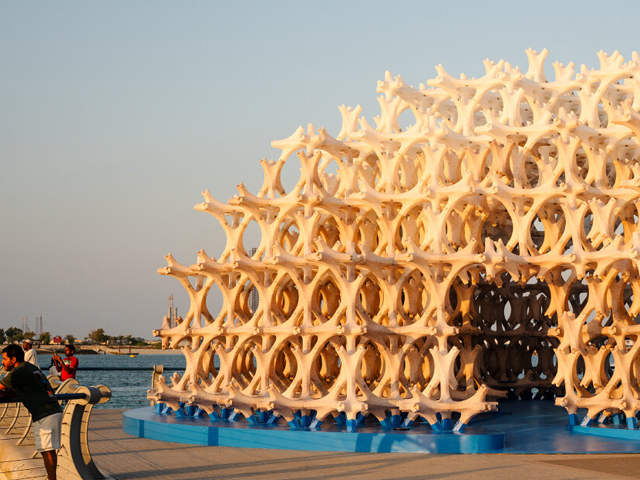TIBETAN BRIDGE TAKES DESIGN CUES FROM ITS OUTLOOK
10 Oct 2024
The Nujiang River 72 Turns Canyon Scenic Area embodies a spirit of great challenge and pay tribute to the monumental achievements of the Sichuan-Tibet Highway.

Text description provided by the architects. Every child who dreams of Tibet holds a G318 dream. The Sichuan-Tibet Highway, renowned as "China's Scenic Avenue," has always been a sacred route for travelers. About 200 km past the junction of the southern and northern Sichuan-Tibet routes from Chengdu to Lhasa lies the most spectacular part of the journey. Famous attractions such as the Bangda Grassland, Nujiang Grand Canyon, Ranwu Lake, and Laigu Glacier are scattered throughout the small town of Baxoi in eastern Tibet.
The Nujiang River 72 Turns Canyon Scenic Area is located in Buze Village, Tibet, approximately 48.5 kilometers from Baxoi County and about 97 kilometers from Bangda Airport in Changdu. This area is home to the most dangerous section of the G318 Highway—the 'Heavenly Road 72 Turns' and the Nujiang Grand Canyon. The design, construction and future visitor experiences of the Nujiang River 72 Turns Canyon Scenic Area all embody a spirit of great challenge and pay tribute to the monumental achievements of the Sichuan-Tibet Highway. All design inspiration comes from this magical scenic avenue. 
The high-altitude glass viewing platform serves as the core structure of the project, inspired by the iconic 'hairpin turn' road layout of the Nujiang River 72 Turns. Perched on the cliffs of the Nujiang Canyon, with a drop of over 130 meters, the steel truss structure extends outward with a single cantilever of 37 meters, forming the 'hairpin turn.' 
The ground is laid with high-transparency safety glass, creating a true 'heavenly road' in the air, transforming the thrilling driving experience of the Nujiang River 72 Turns into an ultimate high-altitude walking experience. This allows visitors to deeply experience the majestic wild beauty and breathtaking allure of the Nujiang Canyon. The exterior materials primarily consist of weather-resistant steel plates in a Tibetan red color, responding to the cultural significance of the region's colors while also standing out from the surrounding environment. 
The highly weather-resistant steel is not only sturdy and durable, but its rough texture also engages in dialogue and fusion with the rugged landscapes around it. The design inspiration for the zipline across the Nujiang River, the Thrilling Steps Challenge Bridge, and the glass suspension bridge also come from the various special construction scenes during the building of the G318 Highway. Beneath the glass skywalk, there is a cliffside restaurant, a coffee bar, and a multifunctional supermarket, all offering an immersive experience. The entire project is highly participatory, interactive, and challenging. 
The Nujiang 72 Turns Canyon Scenic Area strives to take the experience of the natural peril of Nujiang to the extreme, promoting the idea of 'seeking danger within danger, challenging oneself.' It aims to establish a new geographic landmark for Tibet. Travelers are encouraged to break free from the confines of their vehicles and use their own strength to traverse the perilous terrain of Nujiang, turning the journey into a warrior's challenge along the Sichuan-Tibet Highway. 

MORE NEWS

DIXON PARK ESCARPMENT LOOKOUT PROVIDES VIEWS OF PARRAMATTA CITY

SUSTAINABLE PRACTICES IN PUBLIC ART IN DUBAI

ALUMINIUM SUBFRAME & COMPOSITE DECKING ONE-STOP SHOP

FLEETWOOD URBAN REBRANDS AS FORGE

XI'AN'S CULTURAL DISTRICT TAKES DESIGN CUES FROM ITS CERAMIC HERITAGE

